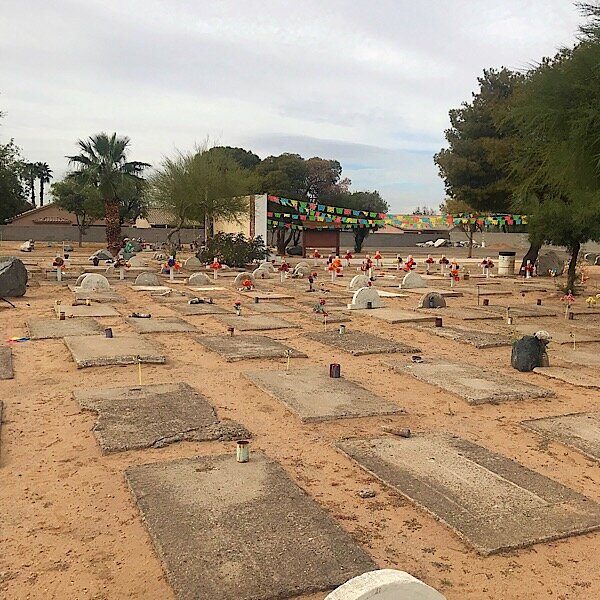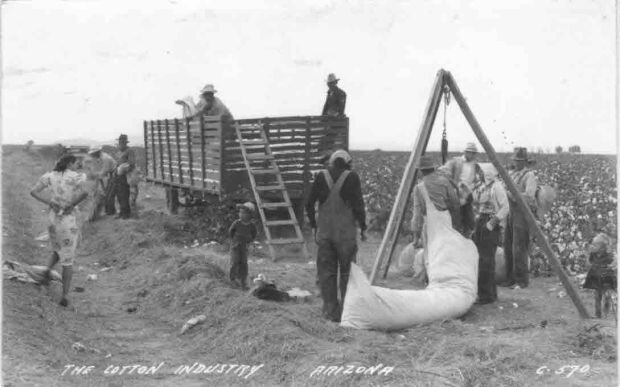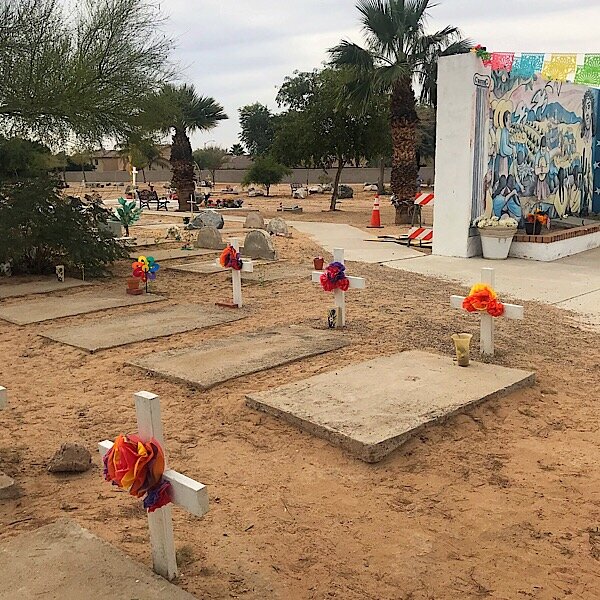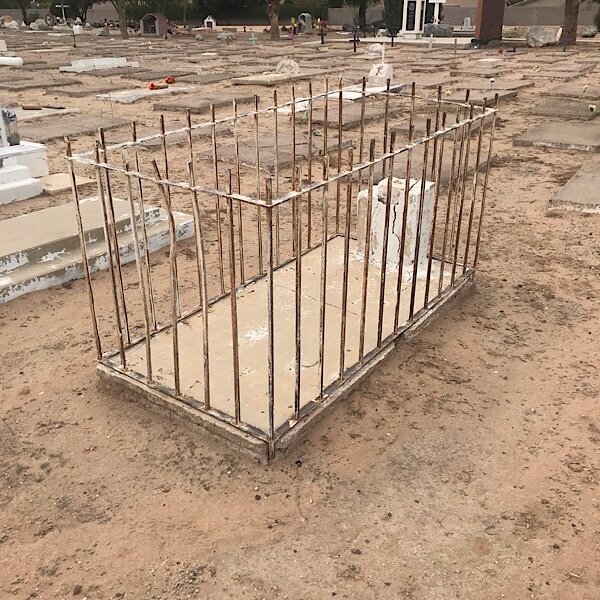Tucked away inside a neighborhood in Avondale, Arizona lies a cemetery, full of mostly anonymous graves. The small wooden crosses long since disintegrated in the desert heat. Rows and rows of crumbling cement slabs with the names long forgotten are the only sign that this is a cemetery.

I grew up on the west side of the Phoenix valley, and went to high school in Avondale, not far from this cemetery, but I had no idea that it even existed. More than that, I had no idea of the history behind this cemetery, and the important role that the people buried here played for not only Arizona but the entire country.
There’s a town in Arizona called Goodyear, and even though I spent the first 20 years of my life in Arizona, I didn’t know that it was named Goodyear after the Goodyear Tire and Rubber Company. I also didn’t know that the Goodyear Tire and Rubber Company was responsible for turning thousands of acres of raw desert into thousands of acres of cotton fields.
In 1917 Goodyear sent one of their junior executives, Paul W. Litchfield to the sprawling desert west of Phoenix. Those familiar with the west side will recognize the name, Litchfield, as the town of Litchfield Park is named after him. His mission was to purchase land to grow cotton. A LOT of cotton. Goodyear needed the cotton because it was a primary component of their tires. And with WWI starting it was becoming difficult for them to obtain the amount of cotton they needed from outside the United States. Litchfield accomplished this for the company and by 1920 over 800,000 acres of cotton was being grown in Arizona.

Turning the arid desert into agricultural land suitable for growing crops required a lot of labor. So, the United States government (who needed aircraft tires and fabric for aircraft wings) legally imported over 2,000 Mexican families to work in the cotton fields. This would have been grueling, back-breaking work under harsh conditions.
Camps were formed around the cotton crops and these camps were given numbers. The camp that was near the Goodyear Farms Historic Cemetery was Camp 50. Camp 50, also known as Algodon or Centro was the main camp.[efn_note]A People’s Guide to Maricopa County[/efn_note] The wages offered by Goodyear were low, but they were better than wages offered in Mexico, and the housing was provided for free.

Shortly after the crops began producing the much-needed cotton, the Spanish Flu epidemic of 1918 hit, and it hit hard. While there aren’t exact numbers of how many people in the cotton camps died due to the Spanish Flu, most of the unmarked graves in the Goodyear Farms cemetery are said to be from migrant workers who died from the flu.
Paul Litchfield recognized that the camps needed a cemetery to bury their dead in. Back then, the closest cemetery would have been many miles away in either Glendale or downtown Phoenix. He formed what was originally called the Pioneer Cemetery to meet the needs of the people working in the camps. It would later be called the Litchfield Cemetery.
While mostly men worked the fields, a few of the women did as well. Most of the women, however, found work at the nearby Wigwam Resort. Originally, the Wigwam served as a place for Goodyear executives to stay while visiting. Loving the winter Phoenix weather they would often bring their families, and in 1929 opened the resort to those outside of the company.
In 1986, Goodyear Farms ceased operations and closed all of the camps. All remaining structures were demolished in order to make room for new housing developments, leaving only the cemetery, and a church behind. [efn_note]Arizona Women’s Heritage Trail[/efn_note]
The cemetery is located near Santa Fe Trails & Indian School Road and is usually unlocked during daytime hours. Local groups and the City of Avondale offer an amazing Dia de los Muertos event at the cemetery every November 1st.






